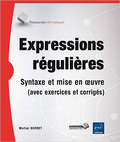Unix |
Unix v6 |
|
 |
restor(8) |
 |
restor incremental file system restore key [ arguments ]
is used to read magtapes dumped with the command. The
argument specifies what is to be done. is a character from
the set t The date that the tape was made and the
date that was specified in the command are printed. A list
of all of the i-numbers on the tape is also given. r
The tape is read and loaded into the file system specified
in This should not be done lightly (see below). x
Each file on the tape is individually extracted into a file
whose name is the file’s i-number. If there are they
are interpreted as i-numbers and only they are extracted.
c If the tape overflows, increment the last character
of its name and continue on that drive. (Normally it asks
you to change tapes.) f Read the dump from the next
argument file instead of the tape. i All read and
checksum errors are reported, but will not cause
termination. w In conjunction with the option, before
each file is extracted, its i-number is typed out. To
extract this file, you must respond with The option is used
to retrieve individual files. If the i-number of the desired
file is not known, it can be discovered by following the
file system directory search algorithm. First retrieve the
directory whose i-number is 1. List this file with This will
give names and i-numbers of sub-directories. Iterating, any
file may be retrieved. The option should only be used to
restore a complete dump tape onto a clear file system or to
restore an incremental dump tape onto this. Thus /etc/mkfs
/dev/rp0 40600
|
restor r /dev/rp0 is a typical sequence to restore a
complete dump. Another can be done to get an incremental
dump in on top of this. A followed by a and a is used to
change the size of a file system. /dev/mt0 ls (I), dump
(VIII), mkfs (VIII), clri (VIII) There are various
diagnostics involved with reading the tape and writing the
disk. There are also diagnostics if the i-list or the free
list of the file system is not large enough to hold the
dump. If the dump extends over more than one tape, it may
ask you to change tapes. Reply with a new-line when the next
tape has been mounted. There is redundant information on the
tape that could be used in case of tape reading problems.
Unfortunately, approach is to exit if anything is wrong. |
|
 |
restor(8) |
 |





